Celebrating the golden jubilee of production, the groundbreaking Sinhala stage play, Professor Ediriweera Sarachchandra's 'Sinhabahu' will go international with its English version on March 15 and 16 at 7 pm at Lionel Wendt theatre, Colombo. Mayashakthi Theatre Foundation with the aim of taking the message of Prof. Sarachchandra to the international audience has taken up this painstaking challenge of presenting the renowned stylized play to the English theatre.
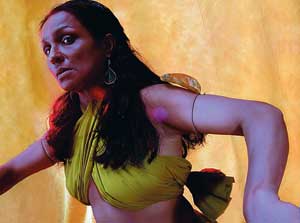 | |
Anoma Jinadari as Suppadevi | |
"Prof. Sarachchandra invented stylized theatre for the modern stage by using as its roots the fundamentals of bygone theatre forms such as Sokari, Kolam Nadagam and Kuththu," says experienced dramatist Dharmajith Punarjeeva, the director of Sinhabahu poetic opera.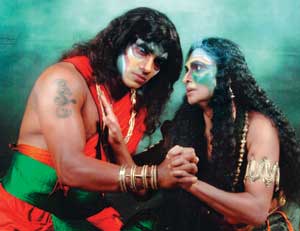
Explaining other reason to do the English version, he said, "Sinhabahu is the mythical story of how the Sinhalese came into being. But this mythical story is distorted and given a negative interpretation in order to demean the country and its people by groups with vested interests internationally. It was in this backdrop we want to take this great play to the international audience,".
When we explained this to Mrs. Lalith Sarachchandra who has the rights over Prof. Sarachchandra's works, she gave her approval and even took us to Dr. Lakshmi de Silva, a colleague and great fan of Prof. Sarachchandra's drama and had translated both' Sinhabahu' and 'Maname' as far back as 1970s.
The task of creating melodies of this highly acclaimed drama was undertaken by veterans in the Western music circle including Mary Ann David. Others who joined her are Jerom de Silva, Noeline Honter and Nawaratna Gamage."While celebrating 50 years, the other main reason for the English version was to educate the international audience on the Sri Lankan theatre and also the mythical tale of how the Sinhala race began," says dramatist Punarjeewa.
"In making the English version the challenges we had to face was to preserve the poetic and music style of the original and also to preserve the 'Asianness' as we were going to campaign internationally," explained Mr. Punarjeewa. "With regard to the music and poetic styles of the English play, the ultimate we could think was 'opera' and the experienced musician Mary Ann David did an excellent piece of work with her creative melodies and also Noeline Honter who showed exceptional talent by going beyond her usual singing style of pop music," he added.
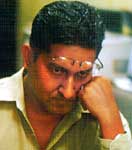 Dharmajith Punarjeeva
Dharmajith Punarjeeva
"They knew about 'Sinhabahu' and they had great respect for the original" the director said. In order to bring the qualities of the lion through choreography, the Mayashakthi theatre group got the support of Kanchana Wijesuriya of Bandu Wijesooriya Dance Academy.
"We had to use Low Country dancing styles in Sri Lanka to show the enormous power and valour of Sinhabahu, the Lion king. The other most important area of the drama costumes was created by Vajira Piries from University of Moratuwa and props were created by Lional Bentarage from University of fine arts.








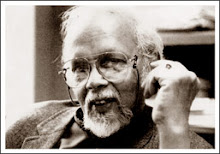











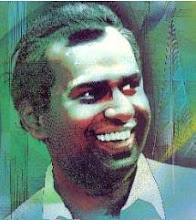















No comments:
Post a Comment